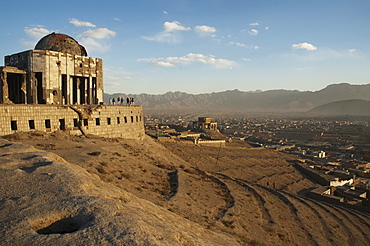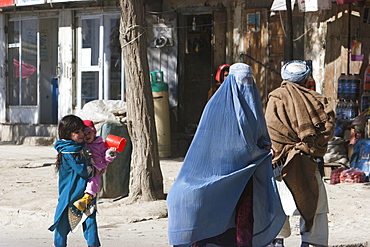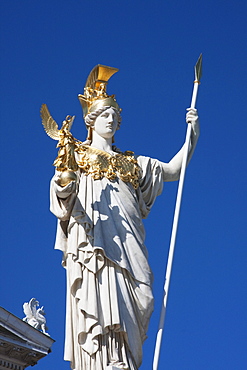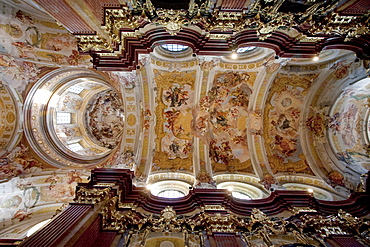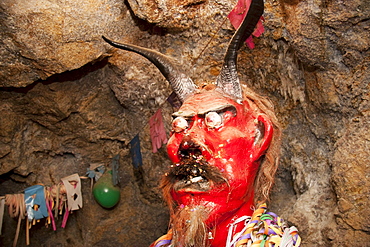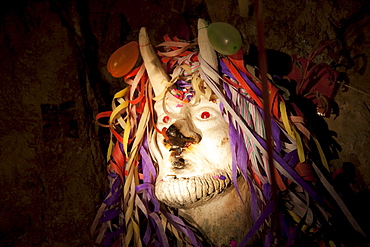Recent searches
Loading...
1116-1010 - Stream In Shenandoah National Park, Virginia
1116-10201 - A Road Running Through A Gate At Night; New Delhi India
1116-10647 - Spa elements, Stones in water in a black bowl with plumeria and rosemary, towel in background.
1116-10689 - Panoramic view of Bamiyan and the escarpment with hundreds of caves and the niche that contained the Small Buddha statue destroyed by the Taliban in 2001, Bamian Province, Afghanistan
1116-10714 - Hindu Kush mountains reflections in Band-i-Haibat (Dam of Awe), Band-i-Amir, Bamian Province, Afghanistan
1116-10760 - Mud houses in Shibar, Bamian Province, Afghanistan
1116-10775 - Mud fort near Sharh-e-Zohak (The Red City) at the entrance to the Bamiyan Valley, Bamian Province, Afghanistan
1116-10782 - Mausoleum of King Mohammad Nadir Shah and Tomb of Sultan Mohammad on the Tapa Maranjan Ridge in Kabul,, Afghanistan
1116-10783 - Mausoleum of King Mohammad Nadir Shah (King of Afghanistan from 1925 to 1933) on the Tapa Maranjan Ridge in Kabul,, Afghanistan
1116-10793 - Tomb of Sultan Mohammad on the Tapa Maranjan Ridge in Kabul,, Afghanistan
1116-10804 - Houses on the Tapa Maranjan Ridge in Kabul,, Afghanistan
1116-10808 - Brick kilns in the outskirts of Kabul,, Afghanistan
1116-10820 - Marble mosque at the Bagh-i-Babur Shah (Babur's Garden) - Kabul,, Afghanistan
1116-10833 - Tomb of Ahmad Zahir the famous singer of Afghanistan at the Shohada-e-Salehin cemetery in Kabul,, Afghanistan
1116-10902 - Boy and girl on a donkey in Bamiyan, Bamian Province, Afghanistan
1116-10924 - Afghan man in Bamiyan, Bamian Province, Afghanistan
1116-10980 - Girl and child follow their mother wearing a burqa on a Kabul street, , Afghanistan
1116-11005 - Darulaman Palace was designed for King Amanullah by a French architect in the 1920s; it later became the Defense Ministry, and was the military headquarters during the Russian occupation. .Kabul,, Afghanistan
1116-11022 - Kuchi nomads and their camels at Tangi Abreshom (Silk Gorge), Kabul Province, Afghanistan
1116-11083 - Afghan woman wearing a burqa holding a girl along the Kabul-Charikar Road, Parwan Province, Afghanistan
1116-11138 - Old Afghan man and boy in Kharwalang, Vardak Province, Afghanistan
1116-11202 - Moorish courtyard of Ex Casa Frias Herrera, San Miguel de Tucuman, Argentina
1116-11266 - Sand spheres at the Cancha de Bochas, Valle de la Luna (Moon Valley), Ischigualasto Natural Park, San Juan, Argentina
1116-11272 - Thanksgiving plaques on a shrine at the Difunta Correa Sanctuary, Vallecito, San Juan, Argentina. La Difunta Correa is the most popular of Argentina's folk saints. She was a woman whose husband was forcibly recruited around the year 1840, during the Argentine civil wars. Becoming sick, he was then abandoned by partisans. In an attempt to reach her sick husband, Deolinda took her baby and followed the tracks of the partisans through the desert of San Juan Province. When her supplies ran out, she died. Her body was found days later by gauchos, however they found the baby still alive, feeding from the deceased woman's miraculously ever-full breast. Once the folk tale became known, her devout followers believe her to perform miracles and intercede for the living. Cattle keepers and truck drivers create small altars throughout Argentina and leave bottles of water as votive offerings.
1116-11584 - Man shearing a Merino sheep at Estancia San Guillermo, Chubut, Argentina
1116-11637 - Santiago Calatrava's Puente de La Mujer (Women's Bridge) in Puerto Madero at night, Buenos Aires, Capital Federal, Argentina
1116-11729 - Carrera de sortija (Race of the Ring), traditional game where a Gaucho gallops under a wooden arch and tries to pass a pin through a small ring hanging from an arch, Estancia Santa Susana, Los Cardales, Provincia de Buenos Aires, Argentina
1116-11736 - Gaucho hearding horses, Estancia Santa Susana, Los Cardales, Provincia de Buenos Aires, Argentina
1116-11771 - Residential quarters, Rila Monastery, Blagoevgrad, Bulgaria
1116-11818 - Pallas Athena statue in the Athenenbrunnen fountain in front of the Parliament building, Vienna (Wien), Austria
1116-11908 - Frescoes by Antonio Beduzzi on the ceiling of the Abbey Church of Stift Melk Benedictine Monastery, Lower Austria, Austria
1116-12132 - Llama (Lama glama), Jatun Yampara Indigenous Community, Chuquisaca Department, Bolivia
1116-12180 - Santo Domingo Church, Sucre, Chuquisaca Department, Bolivia
1116-1279 - Sheela Na Gig, White Island, Lough Erne, County Fermanagh, Ireland
1116-13328 - Pojistuje building, Prague, Czech Republic
1116-13401 - The Response, National War Memorial, Ottawa, Ontario, Canada
1116-13531 - Huasos on horseback corralling a calf during a Chilean rodeo at the medialuna of Estancia El Cuadro, Casablanca Valley, Valparaiso Region, Chile
1116-13810 - Vitality, sculpture by Coast Salish artist Thomas Cannell at BC Spirit Square by the Shadbolt Centre for the Arts, Burnaby, British Columbia, Canada
1116-13893 - Kwakiutl Totem pole, carved by Mungo Martin with Henry Hunt & David Martin by the Maritime Museum, Vancouver, British Columbia, Canada
1116-15125 - Farmer Standing on Dry Farmland, Red River Valley, Manitoba
1116-15148 - Farmland affected by Drought, Red River Valley, Manitoba
1116-15261 - Blueberries, Jean-Talon Farmer's Market, Montreal, Quebec
1116-15578 - Log Boom, North Arm Fraser River, Vancouver British Columbia.
1116-15583 - St-Benoit-du-Lac, Eastern Townships, Austin Quebec.
1116-15784 - Traditional First Nations Longhouse, Klemtu, British Columbia, Canada
1116-16066 - Farmland affected by Drought, Red River Valley, Manitoba
1116-16254 - Second Canyon on South Nahanni River with river and layered clouds, Nahanni National Park, Northwest Territories
1116-16256 - Aerial view of South Nahanni River, Nahanni National Park, Northwest Territories
1116-16944 - Canadian Flag with City Buildings in background, Toronto, Ontario
1116-1709 - Valentia Island, Ring Of Kerry, County Kerry, Ireland
1116-17177 - Wind Turbines in Barley Field at Sunset, near St. Leon, Manitoba
1116-17187 - View of Houses in The Battery and Fort Amherst Lighthouse, at the entrance to St. John's Harbour, Avalon Peninsula, St. John's, Newfoundland
1116-17454 - Horseshoe Falls, Niagara Falls, Ontario, Canada
1116-17721 - An oilfield pumpjack at work in the middle of a blooming field of canola grain, Airdrie, Alberta
1116-17769 - Toronto Skyline in Winter February 2008, Toronto, Ontario
1116-18054 - Yellow canoe floating on Smoke Lake, Algonquin Park, Ontario
1116-1858 - Dry Island Buffalo Jump Provincial Park, Alberta, Canada
1116-18832 - Construction Crew at Work on New Home with Mount Baker in the Background, Abbotsford, British Columbia
1116-1915 - Ulster History Park, Omagh, County Tyrone, Ireland
1116-19530 - Pailon Bridge, Santa Cruz Department, Bolivia
1116-19591 - Pod stage canola field with oil pumpjack and cumulonimbus clouds in the background, near Torquay, Saskatchewan
1116-20094 - Piano and sheet music in window light, John Walter Museum, Edmonton, Alberta
1116-20165 - Jackrabbit in Grasslands National Park, Saskatchewan
1116-20601 - Dusty Car with Cattle Horns and Alberta License Plate, Edmonton, Alberta
1116-2212 - The Quays, Wexford, County Wexford, Ireland
1116-22842 - Banff Springs Hotel, Banff National Park, Alberta
1116-23144 - Numa Falls, Kootenay National Park, British Columbia
1116-23632 - Iconostasis inside the Great Basilica of the Transfiguration (Catholicon of the Transfiguration) in the Holy Monastery of St. Catherine at Mount Sinai, South Sinai, Egypt
1116-23633 - Iconostasis inside the Great Basilica of the Transfiguration (Catholicon of the Transfiguration) in the Holy Monastery of St. Catherine at Mount Sinai, South Sinai, Egypt
1116-23654 - Cathedral of St. Mina Monastery in Mariut, Egypt
1116-23722 - Remains of the Church of the Virgin St. Mary, (built 385 - 412 CE), known asthe Great Basilica, Abu Mena, Egypt
1116-23817 - Temple of Augustus & the Gate of Diocletian, Philae, Aswan, Egypt
1116-24233 - The round window behind the Neo-Roman baptising fountain designed by Schulek shows a scene from the Apocalypse of St John: the Lamb of God and the sealed book at the Mutyus-templom (Matthias Church), Budapest, Hungary
1116-24683 - Hotel de Ville (City Hall) and Statue of Stanislas Leszczynski, King of Poland, created by Georges Jacquot in the center of Place Stanislas, Nancy, France
1116-25172 - Ceramic figure of el Tio or Supai, a creature with horns, gleaming eyes and a big penis, that in fact is not really satanic. It was introduced by the Spaniards in the 16th Century to the mines of Potosi. According to tradition, el Tio (The Uncle) rules over the mines of Cerro Rico, simultaneously offering protection and destruction. Over 500 chambers with statues to honour him have been constructed in Cerro Rico, so miners can leave offerings of tobacco, liquor and coca leaves to invoke his goodwill and protection., Potosi Department, Bolivia
1116-25173 - Ceramic figure of el Tio or Supai, a creature with horns, gleaming eyes and a big penis, that in fact is not really satanic. It was introduced by the Spaniards in the 16th Century to the mines of Potosi. According to tradition, el Tio (The Uncle) rules over the mines of Cerro Rico, simultaneously offering protection and destruction. Over 500 chambers with statues to honour him have been constructed in Cerro Rico, so miners can leave offerings of tobacco, liquor and coca leaves to invoke his goodwill and protection., Potosi Department, Bolivia
1116-25174 - Ceramic figure of el Tio or Supai, a creature with horns, gleaming eyes and a big penis, that in fact is not really satanic. It was introduced by the Spaniards in the 16th Century to the mines of Potosi. According to tradition, el Tio (The Uncle) rules over the mines of Cerro Rico, simultaneously offering protection and destruction. Over 500 chambers with statues to honour him have been constructed in Cerro Rico, so miners can leave offerings of tobacco, liquor and coca leaves to invoke his goodwill and protection., Potosi Department, Bolivia
1116-25190 - Don Humberto Carmenere wine bottle and glasses, Calamuchita, Tarija, Bolivia
1116-2531 - Monument Valley Navajo Tribal Park, Arizona, United States Of America
1116-25347 - Altarpiece surrounded by Baroque-Mestizo frescos dating to the 17th century in Santiago de Curahuara de Carangas church, the "Sistine Chapel of the Andes", Curahuara de Carangas, Oruro, Bolivia
1116-25349 - Final Judgement illustrated by 17th century Baroque-Mestizo frescos in the nave of Santiago de Curahuara de Carangas church, the "Sistine Chapel of the Andes", Curahuara de Carangas, Oruro, Bolivia
1116-25352 - Noah's Ark and the Deluge illustrated by Baroque-Mestizo frescos dating to the 17th century in the baptistery of Santiago de Curahuara de Carangas church, the "Sistine Chapel of the Andes", Curahuara de Carangas, Oruro, Bolivia
1116-25381 - Diablada dancers wearing elaborate devil masks and costumes in the procession of the Carnaval de Oruro, Oruro, Bolivia
1116-25382 - Diablada dancer wearing an elaborate devil mask and costume in the procession of the Carnaval de Oruro, Oruro, Bolivia
1116-25387 - Tuba players in a marching band in the procession of the Carnaval de Oruro, Oruro, Bolivia
1116-25434 - Woman arranging candles on a grave during the celebration of Dia de los Muertos, the Day of the Dead at the San Pedro Cucuchucho cemetery. People decorate the graves of their loved ones with offerings of flowers, particularly marigolds (cempoalxochitl or zempasuchil), bread of the dead (pan de muerto), candles, the deceased's favourite food, drinks and personal belongings to guide their spirits home. Families celebrate their late relatives by the tombs all night from November 1, All Saints Day to November 2, All Souls Day., Michoacun, Mexico








